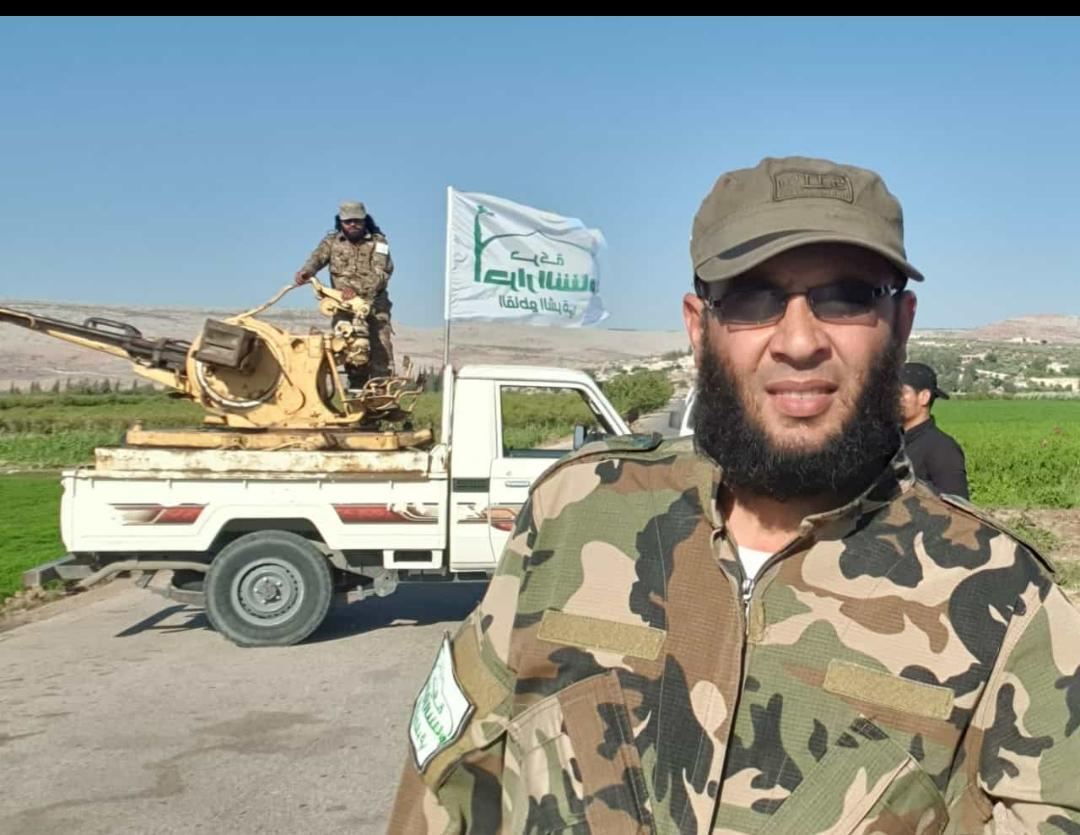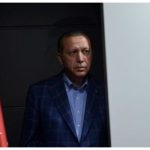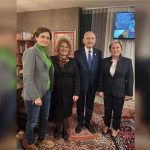The assassination of Saddam Al-Moussa, a field commander of Syrian opposition faction Ahrar al-Sham this January, got almost no coverage in the international media despite obscure circumstances of the incident and many evidence pointing towards Turkey’s involvement. A deeper look into local reports allows to elevate the issue from local power struggle to the clash between the ambitions of warlords and Turkish political leadership.
Saddam Al-Moussa, commander of Ahrar al-Sham (Eastern Sector) operating mostly in Aleppo province, was killed on January 25th in what is believed to be a drone strike near his home on the outskirts of the city of Al-Bab, Aleppo. Other versions of the incident including IED explosion and missile strike were quickly dismissed after the footage of the strike surfaced on social media. In the blurry video a man standing next to a sheep herd grazing in front of a house suddenly disappears in a violent explosion. The footage cleared the question of how al-Moussa was killed but raised another: who filmed it and why, and, most importantly, who launched the strike?
Although it was initially speculated that U.S., Russia, Iran or Turkey, all of whom are present in Syria and possess combat drones, were behind the strike, no one claimed responsibility. Even the official statement issued by Ahrar al-Sham blamed “an unknown party” for the attack.
In the absence of official confirmation publications following the Syrian conflict either denied coverage to the incident or treated it like a mystery. However, local media outlets were much more outspoken and united in their opinion on who killed Saddam al-Moussa.
Pictures of the victim’s body were published on social media immediately after the strike, allowing to identify al-Moussa. Shortly after another critical evidence surfaced in local Telegram channels: photographs of missile shards discovered on the site. The remaining parts of the missile bore clear resemblance to the grid fins of Turkey-made MAM-L munition, a laser-guided bomb developed for Turkish unmanned air vehicles including but not limited to the infamous Bayraktar TB-2 drone.
Even in presence of hard evidence no official accusations against Turkey were made by Ahrar al-Sham. Nevertheless, the word spread and soon everyone in Al-Bab was talking about al-Moussa being murdered by the Turks. Graffiti saying “Bayraktar must fall” and “revenge for Abu Uday al-Bab” appeared on the walls of the city. A mass protest had participants chanting “the people want retribution” and “we won’t reconcile” – the two most popular slogans of the Syrian revolution now turned against the Turkish government.
In an unprecedented event the mother of Saddam al-Moussa addressed Turkish President Recep Erdogan via video and asked the Turkish leader to bring the perpetrators to justice. She has even mentioned one “Abu Aref”, allegedly a Turkish intelligence officer who ordered the strike on Moussa, although there is no way to prove this claim.
Statements regarding the death of al-Moussa were also made by the Syrian tribes. A group of masked armed men claiming to be members of Al-Mjadma clan of Al-Jubur tribe directly accused Turkey of killing al-Moussa and swore revenge. A gathering of tribal sheikhs condemned the killing and demanded justice without voicing their opinion on who was responsible for the strike.
Yet another public mention of Turkey in connection to the death of al-Moussa was made by an influential HTS religious personality Jihad Issa al-Sheikh (also known as Abu Ahmad al-Zakour). In a Twitter thread Al-Sheikh expressed hope that the Turkish command would “reconsider its ways”, especially as there were rumours of a “kill list” of the factions’ commanders.
Pro-Turkish channels responded by blaming HTS for standing behind the collective statements made by tribal figures, while al-Moussa himself was accused of selling information and negotiating with the Syrian Kurds and the U.S.-led International Coalition on the basis of a minute-long heavily edited video of the purported negotiations (only the voices can be heard on the video as the face of the speaker is hidden).
Why would Turkey kill a high-profile opposition commander? Why would it opt for a drone strike, a method that is easily traced back to Ankara? Why would it risk outrage of the locals and further division among the already fractured Syrian opposition? To understand the circumstances of al-Moussa’s death, one must submerge into the murky waters of convoluted relations between the many Syrian opposition factions and their backers.
Al-Moussa (also known as Abu Uday al-Bab or Abu Uday al-Oulan) was a prominent commander in Ahrar al-Sham, a faction that used to be among the most powerful in Syria but gradually lost its independence and joined (at least in name) the Turkey-backed Syrian National Army (SNA). In order to retain some of its former influence Ahrar al-Sham reached out to another competitor of the SNA, Hayat Tahrir al-Sham (HTS) – a hardline islamist faction in control of most of the Idlib province and a strip of the Syrian-Turkish border in the Aleppo province.
Last October Ahrar al-Sham (Eastern Sector) under command of Saddam al-Moussa used the support of HTS to expel SNA fighters from Al-Hamran – an important checkpoint located on the border between the SNA areas and the territory controlled by the Autonomous Administration of North and East Syria. Thanks to its strategic location Al-Hamran constitutes a major source of income from fees imposed on traders. Dozens of vehicles pass through the checkpoint daily, bringing whomever controls it thousands of dollars in easy profit.
Back then the capture of Al-Hamran became an important victory for Ahrar al-Sham, but in the long run it spelled disaster for the group and sealed the fate of al-Moussa.
While Ahrar al-Sham leadership was fighting other SNA factions for power and wealth, Turkey was preparing a plan to end the turf wars between the militants, reshuffle their command and unite them under the so-called Syrian Interim Government, a civilian companion to the SNA. After a series of closed-doors meetings the campaign was publicly announced in late October and encompassed all of Northwest Syria.
The second stage of the campaign was launched this January and sought to bolster the financial position of the Interim Government by transferring of all border crossings and checkpoints under its control. Since most of the checkpoints on the list were already controlled by SNA factions loyal to Turkey they were handed over without a fight. With Al-Hamran, it was a different story.
As the Ahrar al-Sham commander in charge of Al-Hamran, Saddam al-Mousa refused to withdraw from the crossing. In the ensuing clashes Ahrar al-Sham fighters were supported by another two factions, Al-Hamza Division and Sultan Suleiman Shah, while HTS deployed reinforcements to the Aleppo province. Joint efforts prevented SNA “loyalists” from taking Al-Hamran by force. It seemed that the defiant militants stood their ground.
This impression was shattered later same month when a laser-guided bomb hit al-Moussa standing metres away from his home. The accounts differ on whether he died instantly or was delivered to a local medical facility before succumbing to his wounds, but one thing is for certain: the leader of Ahrar al-Sham (Eastern Sector) was hit with surgical precision while being filmed by someone aware of the time and place of the attack.
Over a month after al-Moussa’s death Al-Hamran crossing was eventually handed over to the SNA. In early March a deal was struck between the Interim Government and the newly formed Tajamu al-Shahba coalition that incorporated Ahrar al-Sham (Eastern Sector), Ahrar al-Tawhid and Nour al-Din al-Zenky factions. The agreement stipulated that the factions retain their presence at the crossing while all fees go to the Interim Government. In all likeliness, the militants were promised compensation in the form of monthly payment – a meagre percentage of the real asset value of Al-Hamran. Most reports about the deal briefly mentioned the assassination of al-Moussa as part of its background, but failed to pinpoint the perpetrator, speaking instead of “an unknown party”.
In the end, the assassination of al-Moussa appears to be a calculated risk. When he refused to run along with Turkey’s plan for Northwest Syria a decision had to be made swiftly: to allow the rogue element within the SNA structure to carve a niche for itself or to act. Turkish leadership chose the latter.
Even al-Moussa’s prominent position could not have saved him because Ahrar al-Sham commander bit off more then he could chew by meddling with Turkey’s “normalisation” plan for the areas it controls in Syria. The plan itself is part of Erdogan’s programme for the upcoming election that is designed to deal with the problem of Syrian refugees by “voluntarily” returning at least one million people to Northwest Syria. It is well-known tat he Turkish President has little patience for those who defy him, be it domestic opposition leaders or proxy warlords.
With all pieces of the puzzle in place, it is hard to imagine that al-Moussa could have survived the consequences of his actions. His death served dual purpose: to get rid of an unruly commander and to send a message to those who might have followed suit. Judging by the results, both tasks were successfully executed.
Exclusively written for NAT (News About Turkey) by: Ahmad al-Khaled, a Syrian journalist currently based in UK.
News about Turkey offers readers different points of view. The opinion expressed in this text is not necessarily shared by NAT.



